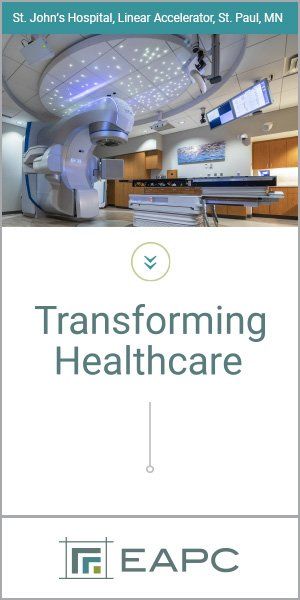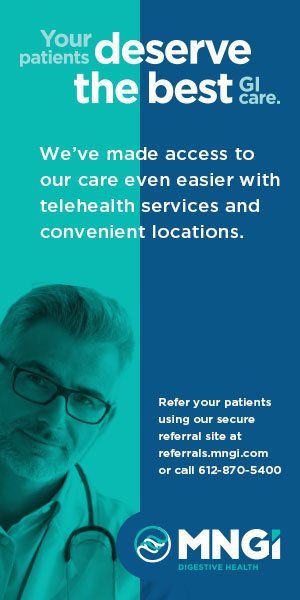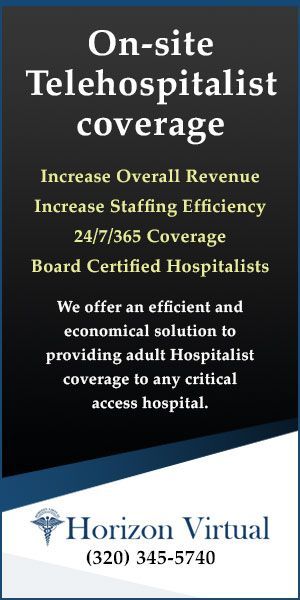he maternal health care industry has been divided over the use of telehealth since the early days of its use for obstetrics, and the COVID-19 pandemic accelerated the debate to a global stage as health care providers were left with no other choice than to implement telehealth solutions to help deliver care.
Telehealth
Telehealth as an Ethical Duty
CMS Changes Advance Maternal Remote Monitoring
BY Anish Sebastian
Lacking the necessary infrastructure for seamless implementation, results were (expectedly) wildly variable. Challenges reported included lack of technological literacy, limited monitoring and financial and language barriers. Telehealth was considered an important alternative to in-person consultations, but concerns about losing the personal connection of the physician-provider relationship, compromising the quality of care and adding more work to a strained labor force initially complicated its adoption.
And yet a growing body of research and on-the-ground experience increasingly dispelled these concerns. In the instances where care was designed based on the user’s needs, technical competency and available resources, it was shown to be an effective alternative to reduce the frequency of in-person visits and burden to the health care centers. Additionally, pregnant women were themselves in favor of supplementing their in-person visits with telehealth options. Eventually a clinical consensus in favor of telehealth began to emerge and has gained steam since the end of the pandemic.
Despite this consensus, barriers to adoption remain, specifically related to reimbursement. Though industry experts have expressed approval and support for telehealth, many insurance plans still consider it a solution that is outside the scope of the standard of care.
Take the example of remote patient monitoring (RPM) for blood pressure. These tools are a clinically validated solution for hypertensive disorders of pregnancy (HDP) — a group of conditions (gestational hypertension, preeclampsia, postpartum hypertension) that complicate approximately 5% to 10% of pregnancies in the U.S. and contribute significantly to maternal morbidity and mortality.
Postpartum preeclampsia may occur in women with no prior diagnosis, and its symptoms overlap with those of preeclampsia earlier in pregnancy. While many cases are identified within 48 hours of delivery, it is not uncommon for complications to arise up to six weeks postpartum. For this reason, the American College of Obstetricians and Gynecologists (ACOG) recommends continuous blood-pressure monitoring through six weeks post-delivery for all postpartum women. In this context, RPM offers a compelling mechanism for adherence — enabling home measurement, transmission of data and early intervention in a critical window.
When the professional society frames telehealth as part of the physician’s ethical duty, the path forward becomes clear.
The American Board of Obstetrics and Gynecology (ABOG) and the Alliance for Innovation in Maternal Health (AIM) also recommend blood pressure data collection to address the issues of hypertensive disorders of pregnancy (HDP), further reinforcing the importance of RPM solutions.
Despite these endorsements, many health plans are unwilling to fulfill claims for reimbursement. The logic often goes like this: patients at risk for hypertensive disorders of pregnancy (HDP) are already monitored during prenatal visits; home monitoring therefore isn’t necessary or reimbursable. This disconnect between clinical consensus and payer policy creates financial and operational friction. For providers, the worry is real: without reliable reimbursement, even the most clinically promising programs struggle.
The evidence base supporting RPM in this context is growing. A recent meta-analysis of remote BP monitoring in prenatal and postpartum women found that prenatal RPM reduced outpatient visits and hospital admissions for hypertension while not increasing adverse maternal or fetal outcomes. Another randomized trial among postpartum patients with HDP showed blood-pressure ascertainment within 10 days of discharge improved from 58.4 % (in-office) to 91.7 % (remote monitoring) — and also important, the disparity between Black patients and White patients was erased under the remote-monitoring arm (92.9 % vs. 92.9 %). These results are particularly meaningful given the disproportionate burden of HDP and maternal mortality among Black mothers.
In short, RPM for BP monitoring in the perinatal period appears clinically safe, equitable and capable of improving surveillance of a high-risk condition. Why then is reimbursement still lagging? The answer lies in policy inertia, administrative complexity and the misalignment of incentives across payers and providers.
ACOG’s Ethical Framework for Innovation
A recent committee statement released by ACOG introduces a new angle to the discussion. The statement, Ethical Considerations With Telehealth in Obstetrics and Gynecology, goes beyond illustrating the clinical benefits of telehealth (a position that the medical society has long held and supported through guidance and recommendations). It offers an ethical framework to guide clinicians in their evaluation of telehealth solutions and determine their responsibility for using telehealth in provision of care. It changes the question from “should we use telehealth” to “do we have a duty to use telehealth?”
In the statement, ACOG defines telehealth as:
Technology-enhanced health care frameworks that allow traditional clinical diagnosis and monitoring to be delivered or facilitated by technology. The terms telemedicine, connected health and digital health are also used to describe similar technological applications in health care. These frameworks may include such services as virtual visits, remote patient monitoring and mobile health care.
Included under the definition are “discrete devices or software programs used to facilitate obstetric and gynecologic care, including remote monitoring devices for pregnant patients.” These solutions, as the statement notes, have demonstrated value in monitoring hypertension and preventing progression to preeclampsia, among other clinical benefits. The implication is that if remote patient monitoring is not the standard of care now, it should be — under the ethical framework laid out by the statement.
Underpinning the statement are the four foundational bioethical principles: beneficence, nonmaleficence, autonomy and justice. ACOG makes several core assertions:
- Beneficence: Clinicians must act to benefit patients and remove harm — and telehealth is explicitly supported as a model that “improve[s] quality of and increase[s] access to obstetric and gynecologic care.”
- Autonomy: Patients should be able to participate in shared decision-making around telehealth versus in-person care — preserving choice and control.
- Justice: The statement acknowledges that equity barriers (language, literacy, broadband access, digital divide) must be addressed — telehealth must not exacerbate disparities.
- Nonmaleficence: Deploying telehealth must not reduce quality or safety; clinicians must ensure established safeguards (licensure, credentialing, technology integrity).
Crucially, the statement goes further. When evidence supports a telehealth modality, physicians and health systems may have an ethical obligation to adopt it — regardless of reimbursement status. ACOG states that “rapid adoption of new telehealth interventions has the potential to outpace … full consideration of the ethical issues” but equally suggests that withholding safe, effective tools may conflict with physician responsibility.
This reframes telehealth: it is no longer simply a convenience or innovation, but potentially a component of the standard of care, particularly where access, equity and clinical benefit intersect.
Deploying Telehealth As An Ethical Imperative
Based on the principles outlined, ACOG emphasizes that telehealth is a legitimate and important tool for expanding access to obstetric and gynecologic care. It can safely serve as an alternative to in-person visits when appropriate protocols are in place. ACOG alsos emphasize that decisions about telehealth should occur within a framework of shared decision-making, always preserving in-person care as an option. Physicians are called to provide targeted support to patients, employ platforms designed specifically for telehealth with strong data protections and remain mindful of equity barriers such as language, literacy or technology gaps.
The ethical imperative pushes three practical actions:
- Self-education and competency: Providers must become familiar with telehealth modalities, remote monitoring platforms, data security, patient training and hybrid workflows. ACOG has long offered implementation guidance (e.g., credentials, licensing, technology issues) and underscores that familiarity isn’t optional.
- Collaborative design and vendor partnerships: Given the operational burden of RPM (device logistics, data review, alerts, follow-up), many practices partner with digital health platforms. Clinician-vendor collaboration can help mitigate time constraints, integrate with practice workflows and safeguard quality. For example, in the Twin Cities, seven OB/GYN independent practice groups recently merged, and the CEO noted that while telehealth is used daily for metro patients, expansion to broader state populations remains limited by time and infrastructure.
- Advocacy for reimbursement parity and policy alignment: Given the ethical framing, clinicians and systems have a role in advocating for payer coverage parity, integrating telehealth into institutional protocols and tracking outcomes to build financial and clinical cases.
When the professional society frames telehealth as part of the physician’s ethical duty, the path forward becomes clear.
ACOG also acknowledges that systemic challenges, particularly reimbursement disparities, remain a serious barrier to adoption. As evidence supporting the benefits of telehealth continues to grow, ACOG concludes that it becomes increasingly incumbent upon OB/GYNs to self-educate and integrate these tools into practice, regardless of reimbursement opportunities.
This last point is what makes the statement unique. By positioning telehealth within the physician’s duty of care, ACOG challenges providers to recognize telehealth as part of their ethical responsibility to meet patient needs. While this perspective alone may not immediately change insurer policies, it sets a professional standard that reinforces the importance of adoption.
A Positive Shift on the Reimbursement Front
Encouragingly, practical reimbursement changes that support ACOG’s committee statement may soon take effect. The Centers for Medicare & Medicaid Services (CMS) has proposed new billing codes for RPM in its 2026 Physician Fee Schedule. These codes aim to reduce the minimum requirements for monitoring periods and clinical interactions, which previously limited clinicians’ ability to use RPM effectively.
Key proposals include:
- A new RPM device supply code covering two to 15 days of data collection (versus the previous requirement of ≥16 days over 30 days). This would expand eligibility for patients who need short-term monitoring (such as postpartum hypertension) while retaining reimbursement parity with longer monitoring periods.
- A new time-based management code covering 10 to 20 minutes (versus the prior 20-minute minimum) of clinical staff time interacting with RPM patients — lowering the operational threshold to bill for shorter, meaningful engagements.
- Proposed changes to the practice expense and work relative-value scale (RVS) methodology for RPM/remote treatment monitoring (RTM) codes. CMS proposes to use Outpatient Prospective Payment System cost data rather than relying solely on AMA RUC inputs.
- An increase in the conversion factor for PFS payments in 2026 (+2.50 % statutory update plus additional work-RVU adjustment) translating into potential increases of approximately 3.3 % for non-APM participants and approximately 3.8 % for qualifying APM participants.
If finalized, this development could help align policy with both clinical evidence and ethical guidance. It may expand access to RPM, particularly for underserved populations and patients in rural areas, and support the integration of telehealth as a sustainable, standard component of obstetric care.
The Rural Access Crisis
The ethical and structural imperatives converge most starkly in these rural and underserved communities. Over half of U.S. counties now lack a practicing OB/GYN, and more than 300 rural hospitals have shuttered labor and delivery units since 2011. For many women in these areas, prenatal visits require long travel times; postpartum follow-up is even harder. Telehealth and RPM offer a pathway to preserve access.
In rural settings, the combination of provider shortages, transportation barriers and social-determinant burdens makes traditional in-office prenatal and postpartum care fragile. Telehealth can reduce travel burdens, enable earlier complication detection (e.g., HDP), and support continuity of care. Simultaneously, upgraded reimbursement mechanisms (e.g., for RPM) make scalable remote programs more viable.
Medicaid coverage is a critical layer. Sixteen states still limit postpartum Medicaid coverage to 60 days — and new policies in the budget reconciliation bill may threaten even the access that exists. The narrowing of the window leaves some of the highest risk mothers unsupported during the vulnerable postpartum period. Without reimbursement infrastructure aligned to the unique needs of rural, Medicaid-dependent populations, telehealth remains optional — not standard.
From an equity standpoint, the ACOG ethics statement underscores that digital modalities must not widen disparities. Rural broadband deficits, device access issues and technology-literacy gaps must be addressed. RPM programs that incorporate loaned devices, multilingual support and coordinated care management can reduce the digital divide rather than exacerbate it.
Real-World Limits and Lessons
Whereas the promise of telehealth and RPM is substantial, caution is warranted. Some of the key operational and implementation lessons include:
Infrastructure and integration: Successful RPM programs embed into existing clinical workflows and EMRs. If data livestream in silos, clinician burden increases and adoption stalls.
Patient training and support: Devices are only as good as their usability. Studies show that programs that lend BP cuffs, employ smartphone apps and provide ongoing education achieve higher compliance.
Workforce demands: Even with RPM, human resources remain essential — monitoring alerts, intervening clinically, coordinating follow-up. Without adequate staffing, the promise of RPM can become a burden.
Equity vigilance: Some trials noted that in-office follow-up rates for Black women were far lower than for White women; RPM eliminated that gap in one trial. But equity isn’t automatic — careful design is needed.
Evidence gap on long-term outcomes: Many studies show improved follow-up or monitoring metrics, but fewer demonstrate reduction in major maternal-morbidity outcomes (e.g., strokes, readmissions) over the long term. The meta-analysis noted that while prenatal RPM reduced admissions and visits, “there was no increase in adverse maternal and fetal outcomes;” but it also cautioned on study heterogeneity and quality.
An Ethical Duty to Act
The convergence of clinical evidence, evolving reimbursement policy and an ethical imperative from ACOG suggests that telehealth and RPM in obstetrics are moving from innovation to expectation. For maternal health, the stakes are high. RPM offers a scalable, patient-centric approach to monitoring, early detection and equitable care.
In this new framework, the question facing OB/GYNs is no longer simply, “Should we adopt telehealth?” but instead, “Can we afford not to?” When evidence shows comparable safety and enhanced access, when payers begin to reduce barriers, and when the professional society frames telehealth as part of the physician’s ethical duty, the path forward becomes clear.
For providers, health systems and payers alike, the time has come to align ethics, evidence and policy, and to recognize that remote monitoring and telehealth aren’t optional add-ons but essential tools for safeguarding maternal health. It is not just a question of efficiency or convenience; it is a matter of justice, access and clinical responsibility. Mothers and infants depend on it.
Anish Sebastian, is the CEO and co-founder of Babyscripts, a company using internet-enabled medical devices and big data to transform pregnancy care.
MORE STORIES IN THIS ISSUE
cover story one
The Rise of Health Misinformation and Disinformation: Recognizing the Truth
By Robin Austin, PhD, DNP, RN, DC, AND Katheren Koehn, MA, RN
cover story two
The Rural Health Transformation Fund: Creating a sustainable way forward



































